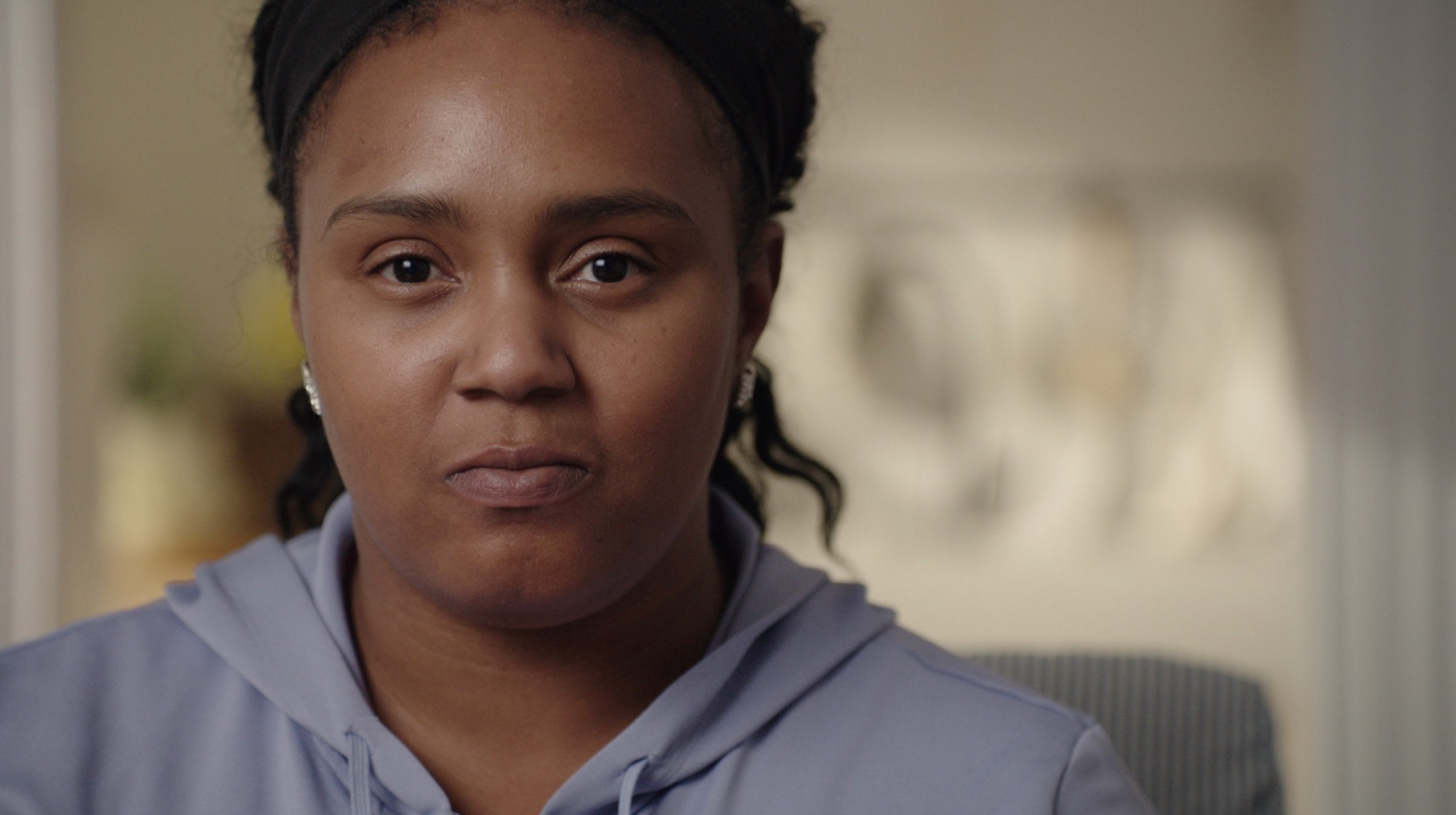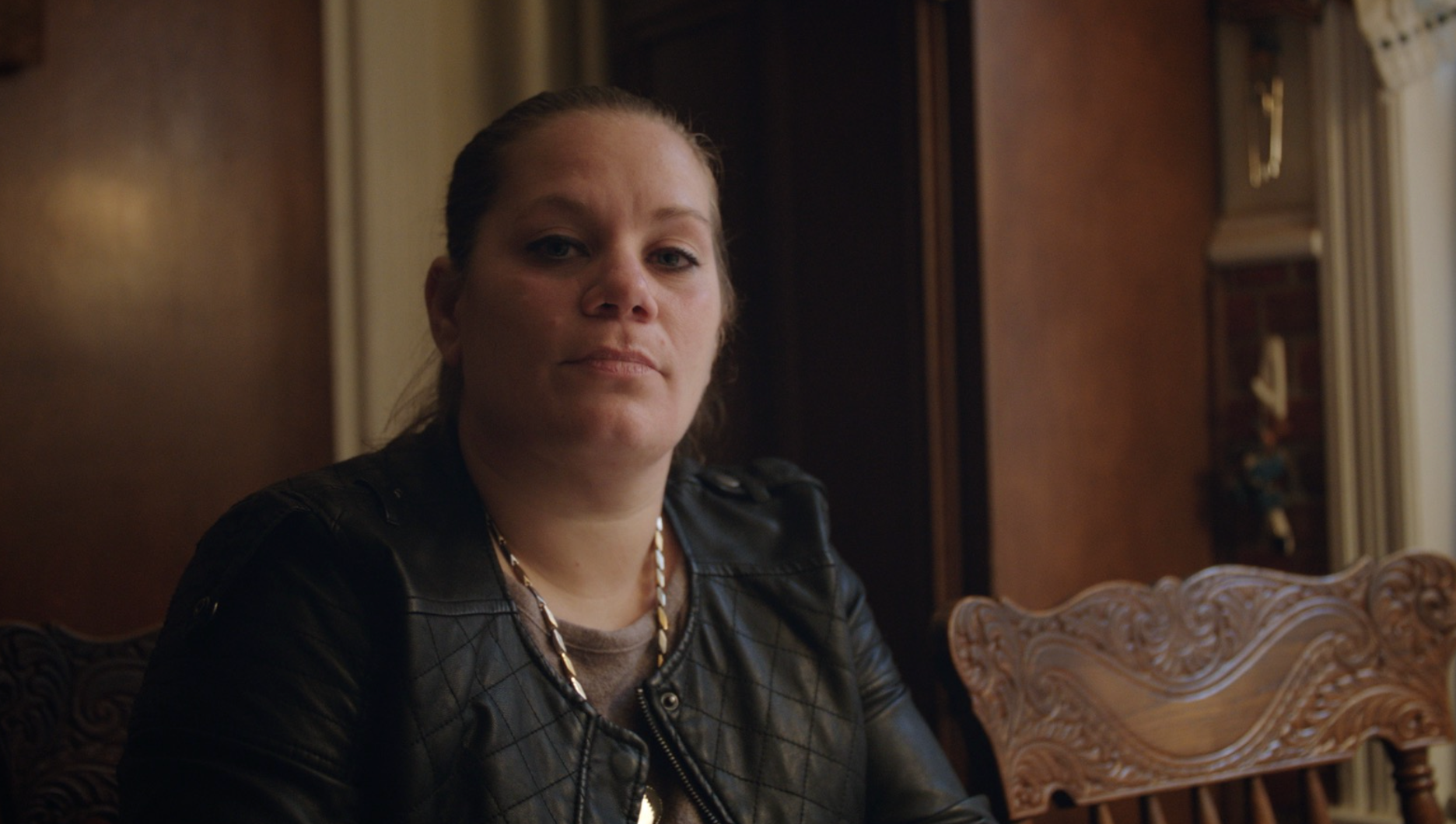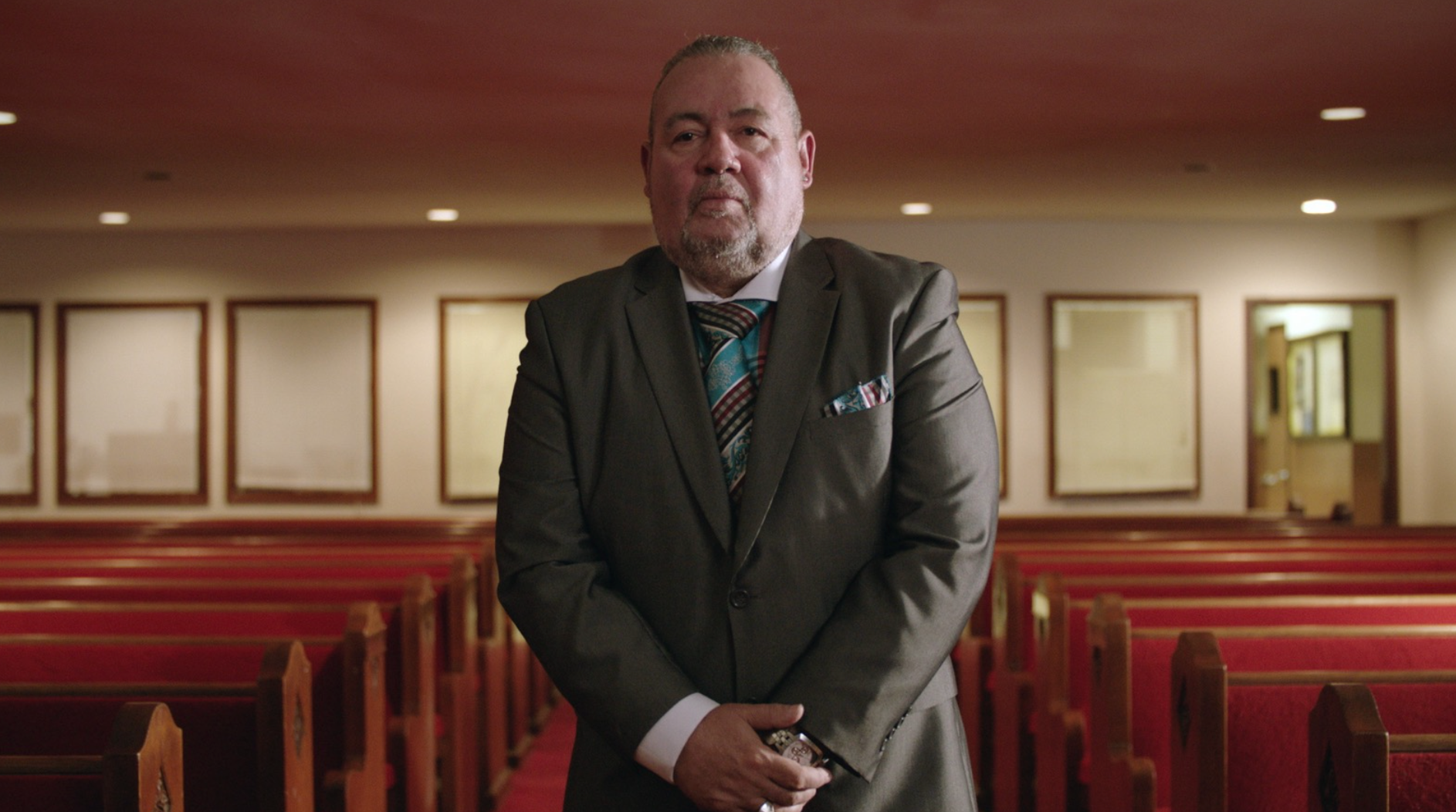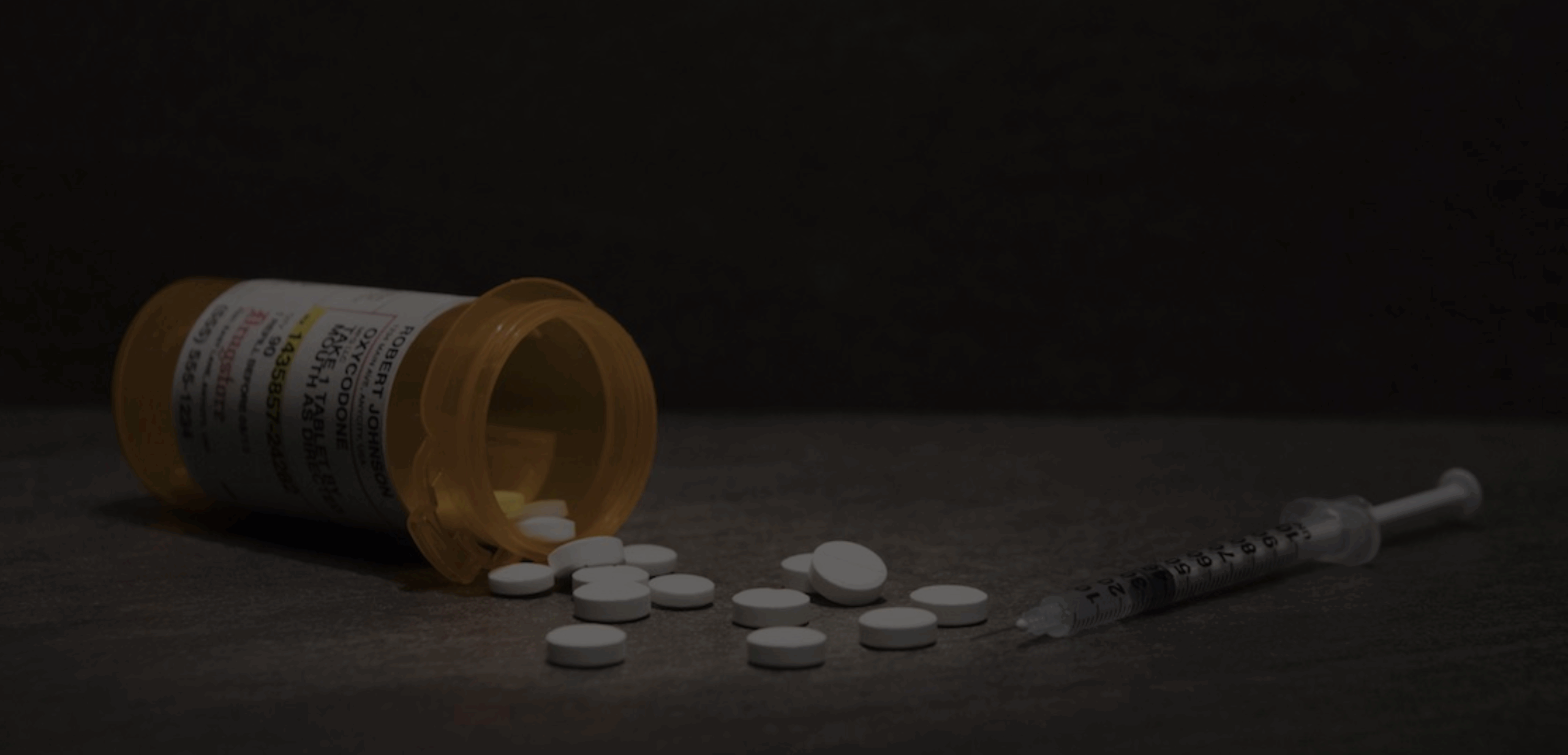Don’t Take The Risk is a campaign originating in city of Philadelphia that spans the Tri-State area including Pennsylvania, New York and New Jersey but provides helpful information for the entire US about Fentanyl overdose, the prescription drug epidemic, aiming to create awareness and provide helpful resources to those in need. The fight lives on until no one else is affected by fentanyl. Read real stories below.
April

April was pregnant with her second child when her doctor prescribed her painkillers for back pain. What started with a legitimate prescription quickly progressed to dependency and addiction, leading her to invent reasons for more prescriptions. After four years of her doctor writing her prescriptions, her doctor said “you’re addicted” and cut her off cold turkey. “It got to the point where I was eating them like candy,” April said, “and I was still going to the doctor for pills. I was getting 120 a month.”
April turned to the streets, selling drugs in order to cover the costs of her habit. “It got to the point where I couldn’t get up for work or keep up with my kids and the house,” she said. DHS removed her three children from her custody. She lost her home soon after, spending years living in the streets, sleeping on a cardboard box, working as a prostitute, and robbing people. She was eventually jailed and suffered from the effects of withdrawn in jail on the floor of her cell.
When she was released from prison, April went to a recovery house where she spent one year as an inpatient and one year as an outpatient. Now she works, has a home, and has two of her three children back. She has supervised visits every Sunday with her son, who lives with his father. April writes about her experience, often speaking publicly about addiction and homelessness.
Portia

Portia was prescribed painkillers by her doctor when she was 18 years old for a high school softball injury. She was an allstar player and was sliding into home plate when she broke her ankle. After her injury had mostly healed, Portia felt some residual pain and asked her mother if she had any pills left. She took the final pill of her prescription at the amount she was prescribed and it made her so high that she nodded out. She recalls desperately wanting to keep that feeling. The next day Portia went around the neighborhood asking if people had more pills to sell.
From then on, Portia lied to doctors to get prescriptions and stole prescriptions to support her addiction. Later, Portia had a baby and couldn’t stop taking the pills. Eventually, she gave custody over to her mom, and went to Atlantic city to work as a prostitute. To this day, Portia has never met her daughter in person, and they have only seen photos of each other. “my daughter thinks I’m her aunt… I don’t know her favorite color,” Portia says, “I don’t know what she looks like, I don’t know how tall she is…”
In Atlantic City, Portia was offered a bag of heroin to snort that made her feel better for a few weeks. She liked the heroin, and it was much cheaper than the pills which had lost their effect after taking them for so long. As a result of her addiction, Portia lost her front teeth and now has removable veneers. Portia moved back to Philly, still using, and got pregnant again. This was the moment when she decided to stop. Portia has since given birth to twins and joined a recovery program. She and the twins live together in Philadelphia. Portia has been in recovery for a year and is eager to share her story to spread awareness around prescription opioid abuse.
Maria

When Maria was 20, she saw people in her neighborhood taking prescription pills and she became curious. She started by buying three painkillers on the street for $10. Soon her habit progressed to higher milligram pills and her use became more frequent. Her habit eventually progressed to using heroin. She recalls the emotional distress it caused her family, “my mother took the hinges off my bedroom door because she didn’t want to, God forbid, find me dead.”
Maria’s sister was killed in a hit and run. Her father passed away five months later. “It was the hardest thing I’ve ever had to go through,” she recalls. Maria and her sister were only 21 months apart in age, so they were very close. She found the strength to gain sobriety through loss. “It’s crazy how for one minute I found clarity in the loss and wanted to get clean,” she said. “I went through withdrawal, and now my body is back to normal. It was the hardest time of my life.”
Emilio

Emilio describes “la prension de juventud” (or teenage peer pressure) as the start of his drug use. He became addicted to the pills and started seeking out doctors for prescriptions. He’d come up with injuries and describe pain in order to get a prescription. His life started to fall apart.
At this time he spent a lot of time “en la calle” (on the street), robbing people, using and selling drugs. He would sell drugs, describing himself as his own best customer. He spent a lot of his youth in the streets, for many years never wandering far from a small section of the city.
He remembers the last two years of his addiction as the hardest; at one point he was living in an old run down house, but didn’t truly want to get clean yet. During his youth he attempted recovery treatment many times, but it didn’t stick until he entered a treatment center. He credits Narcotics Anonymous with helping him stay clean for over 20 years. Today, Emilio is happy with his job that includes his own office and is also an ordained minister. He hosts a weekly ministry for people in active recovery.
Destinie
Christian was Destinie’s uncle, and being only two years apart in age, he was also her best friend. He started “experimenting” with opioid painkillers as a teenager. At the time, Destinie didn’t think it was a big deal, “he excelled in everything he attempted athletically and academically.”
After Christian’s friend was killed, his substance abuse spiraled out of control. Destinie had no idea that Christian eventually began using heroin. Even when doctors told her and her family that he had died of a heroin overdose, only five weeks after the death of his father, Destinie says she still couldn’t wrap her “mind around how he went from painkillers to heroin.” Then she “realized they’re the same thing.”
Now, Destinie dedicates her life to fighting the opioid epidemic. She confronts the stigma around addiction. “I’m not ashamed to talk about it. He was sick, he had a disease, and people need to understand that,” she says. As an advocate, she hopes that her story will help people to address their own addictions early on. No one, Destinie says, should suffer the fate Christian did.
Wendy
Growing up, Ryan was always an athletic, outgoing, and loving son. His mother Wendy knew something had changed when Ryan moved back home after attending college. At school, Ryan had gotten a DUI after a minor car accident. His doctor prescribed him opioids to help with the pain. Ryan’s fall into full-blown addiction was swift. He tried several rehab centers and had some short-term success. But his recovery didn’t last. Ryan began using again while spending time in jail for his DUI charge.
Ryan overdosed on heroin while on house arrest. First responders revived him using Narcan, but that was the last straw for Wendy. She had two younger children in the house to care for. In an act of tough love, she kicked Ryan out, insisting he get his own place and a job. She hoped getting kicked out would be his wake-up call. Unfortunately, Ryan died from an overdose of prescription opioids and heroin. After his death, Wendy opened a male sober living center in Newtown Square, PA. Wendy also started a parents support group in Radnor, PA, for other parents who have lost a child from addiction. She will always grieve the loss of her son. She shares her story in hopes that others get real about addiction and find the help they or their loved ones need.
Heroin in pill form.
“Prescription painkillers,” or “opioids,” are drugs that are made from the opium poppy or similar drugs that are made in a lab. Prescription painkillers – such as Percocet, Vicodin and OxyContin – are chemically and biologically similar to heroin. Four out of five new heroin users started by using prescription painkillers.
While prescription painkillers can reduce pain in the short-term, they have many dangerous effects. Like heroin, prescription painkillers make people drowsy, which can lead to car accidents and falls. Regular users can have withdrawal symptoms if they stop. And like heroin, these painkillers can cause someone to stop breathing, which is what causes death in an opioid overdose.
In recent years, doctors have prescribed too many opioids to too many people. Sales of prescription opioids nearly quadrupled in the United States between 1999 and 2010. In 2012 alone, 259 million prescriptions were written, enough for every adult to have a bottle.
907 people died from drug overdoses in Philadelphia in 2016, an increase of nearly 30% from 2015.
(Medical Examiner’s Office, Philadelphia Department of Public Health)
80% of these deaths involved an opioid, including prescription painkillers, heroin, and fentanyl.
(Medical Examiner’s Office, Philadelphia Department of Public Health)
In 2015, over 33,000 people died from a drug overdose involving an opioid. Nearly half of these involved a prescription opioid painkiller.
(Rudd RA, Seth P, David F, Scholl L. Increases in Drug and Opioid-Involved Overdose Deaths – United States, 2010-2015. MMWR. 2016 Dec 30;65(50-51):1445-1452.Centers for Disease Control and Prevention. Prescription Opioid Overdose Data. 2016. Available at: https://www.cdc.gov/drugoverdose/data/overdose.html)
Over 15% of adults in the United States have used prescription opioid painkillers when not prescribed to them.
(Barry CL, Kennedy-Hendricks A, Gollust SE et al. Understanding Americans’ views on opioid pain reliever abuse. Addiction. 2016 Jan;111(1):85-93.)
In 2014, nearly 2 million adults in the United States were addicted to prescription opioid painkillers. Center for Behavioral Health Statistics and Quality. (2015). Behavioral health trends in the United States: Results from the 2014 National Survey on Drug Use and Health (HHS Publication No. SMA 15-4927, NSDUH Series H-50
Up to 1 in 4 adults in primary care who take opioids long-term for non-cancer pain meets criteria for opioid addiction.
(Boscarino JA, Rukstalis M, Hoffman SN et al. Risk factors for drug dependence among out-patients on opioid therapy in a large US health-care system. Addiction 2010;105:1776–82.)
People can begin to show signs of withdrawal from opioids after taking them daily for as little as a week.
(Galinkin J and Koh JL for the Committee on Drugs, Section On Anesthesiology and Pain Medicine, American Academy of Pediatrics. Recognition and management of iatrogenically induced opioid dependence and withdrawal in children. Pediatrics. 2014 Jan;133(1):152-5.)
People who have never taken opioids can suffer a fatal overdose from just a few pills.
(Purdue Pharma L.P. Stamford, CT 06901-3431 September 8, 2009. OXYCONTIN – oxycodone hydrochloride tablet, film coated, extended release. Available at https://dailymed.nlm.nih.gov/dailymed/archives/fdaDrugInfo.cfm?archiveid=15783.)
Four out of five new heroin users started by using prescription opioid painkillers.
(Muhuri PK, Gfroerer JC, M. Davies MC. Associations of Nonmedical Pain Reliever Use and Initiation of Heroin Use in the United States, August 2013.)
(Substance Abuse and Mental Health Services Administration, Center for Behavioral Health Statistics and Quality Data Review. Available at: http://www.samhsa.gov/data/sites/default/files/DR006/DR006/nonmedical-pain-reliever-use-2013.html)
Sales of prescription opioids nearly quadrupled in the United States between 1999 and 2010.
(Centers for Disease Control and Prevention. Vital Signs: Overdoses of Prescription Opioid Pain Relievers — United States, 1999—2008. Available at: https://www.cdc.gov/mmwr/preview/mmwrhtml/mm6043a4.html)
In 2012 alone, 259 million prescriptions were written for in the United States, enough for every adult to have a bottle.
(Centers for Disease Control and Prevention. Vital Signs: Opioid Painkiller Prescribing, July 2014. Available at: https://www.cdc.gov/vitalsigns/opioid-prescribing/)
Don’t take the risk.
Anyone can become addicted to opioids, and anyone can have an overdose. Just because they are prescribed by healthcare providers does not mean that opioids are safe. Follow these guidelines to minimize the risk of addiction and overdose:
- Never use prescription opioid painkillers that have not been prescribed to you.
- If your healthcare provider prescribes opioid painkillers to you, ask if there are any non-addictive alternatives to treat your pain instead.
- Don’t take more than 3 days of prescription opioid painkillers unless you have been instructed to by your healthcare provider and he or she believes the benefit is worth the risk (for example, for cancer-related pain or end-of-life care).
- Avoid taking opioids with benzodiazepines (prescription medications often used to treat anxiety or cause sedation) whenever possible because this combination makes the risk of overdose much higher. If you are taking both of these medications, talk with your doctor about safely stopping one or both of them.
- Keep your medicine in a locked cabinet and dispose of any unused medication to prevent use by others.
Need Help?
Help is available if you or someone you know is addicted to opioid painkillers or heroin.
Anywhere in the United States:
Call 1-800-662-HELP for confidential treatment referrals, 24/7.
Philadelphia residents:
Call 1-888-545-2600 if you have Medicaid (such as Aetna Better Health, UnitedHealthcare Community Plan of Pennsylvania, Health Partners Plans or Keystone First).
Call 1-215-546-1200 if you are uninsured.
